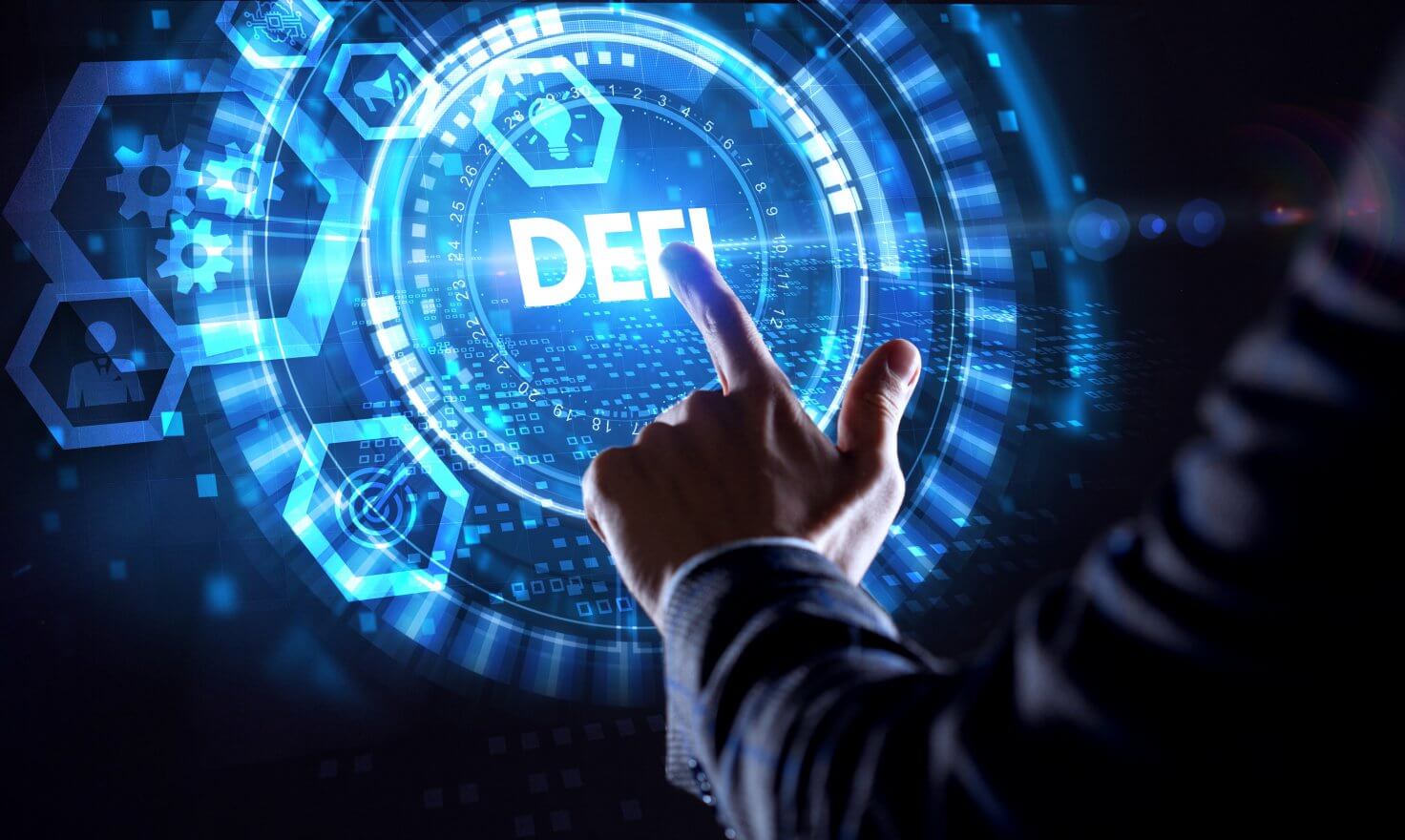
What is De-Fi?
Decentralized finance, more commonly called De-Fi (Decentralized Finance), has been making an appearance for a couple of years now.
As with cryptocurrencies, the purpose of DeFi is to reduce, or even avoid, any kind of intermediary.
Depending on the strength of decentralization (i.e. removal of intermediaries) there are two DeFi types.
Weak DeFi, relying on "traditional" peer-to-peer platforms;
Strong DeFi, based entirely on distributed ledgers (DLT). The most renowned is, precisely, the blockchain.
As everyone knows, however, the blockchain is a "simple" registry with the particularity of TimeStamp; that is, the "date certain".
So how could it guarantee that all operations can be carried out correctly and above all co-oblige the actors of the transaction to obtain the correct result?
Through the use of Smart-Contracts.
Smart-Contracts are nothing more than particular code routines that exploit the if-then algorithmic construct.
When two actors commit to perform a particular operation, the variables are taken over by the Smart-Contract that manages them and sends the operation to a successful conclusion only and exclusively when the conditions imposed by the programmer are met.
The extreme innovation of this new financial frontier is the accessibility to any person who has an active wallet.
This simplicity has meant that in a very short time (just over a year) the volumes have exceeded 23 billion dollars.
Defipulse.com is the site where you can retrieve this information that, being transparent, is obtained through the value contained in the Smart-Contract.
How Does DeFi Work?
Let's take a look at the two types of DeFi present; the weak and the strong.
In order to get into the functioning, we use the Strong DeFi, the one based on the Blockchain and Smart-Contract.
The blockchain is a particular distributed ledger, where all the blocks are connected to each other through a "chain" and this chain consists of cryptographic protocols.
In fact, the next block contains the identifier (Hash) of the previous one.
Compared to other distributed ledgers, the blockchain allows transactions with a unique asset.
In this case a cryptocurrency, but you can also exchange tokens of any kind (if you don't know what tokens are read here)
A token can represent anything from a right to a physical currency (in this case it's called a Stable-coin).
The tokens can be exchanged through the blockchain and are created by Smart-Contracts (these software through the usual algorithmic construct "if-then" can also create assets).
Obviously, these smart-contracts before being activated, are verified by the decentralized network.
Once they are verified and authorized, they are placed in a blockchain and then incorporated into the blockchain.
As you can easily guess, not all blockchains can handle smart-contracts; one of the most renowned (after all, it was the first!) is Ethereum.
Almost all, DeFi's applications rely on this blockchain; only recently the Smart Binance Chain has been added.
How is DeFi revolutionizing the crypto world?
Every person dedicated to online cryptocurrency trading must have an account on an exchange, where they transfer funds in order to buy/sell tokens.
Here, in DeFi, this is not necessary: everything is connected to your wallet.
The interfacing app connects to your wallet (clearly we will have to confirm it with our credentials) and everything is done.
These exchanges are called Dex, or decentralized exchanges: no intermediary, no volume limit and, above all, the keys to your wallet are not in the "hands" of any centralized exchange.
Obviously in order to access any service, then activate the smart-contract, it must be confirmed through the wallet and this has a cost (not excessive, but it has a cost) this is because the miners must record on the blockchain that our wallet will also interact with that particular smart-contract.
This financial frontier really out of the ordinary, has moved volumes of money so important that Nasdaq has launched DEFX: an index that monitors the major products of DeFi.
Another important goal achieved by DeFi is the possibility of cryptographic lending: I block a certain amount of money which is placed in a pool.
Of the blocked sum I receive commissions because a part of it is not usable.
Let me explain.
Depending on the platform, I can get a loan on the blocked sum, which of course is already covered by the guarantee of the sum I paid.
Let's take the example of MakerDAO which is the most important lending platform.
Against a sum paid, I can borrow 50% of it.
Apparently it seems like a rip-off, but it's not; in fact I can use half of the blocked capital: the passive interests are compensated with the active ones of the blocked sum.
In practice the cost of money is zero... isn't that extraordinary?
A clarification
The interests accrued with lending are not to be confused with the income derived from staking, in fact they are two passive incomes that work in a diametrically opposite way.
In fact, in an old post on Publish0x I dealt with this topic, but I think I will return to it because very often there is confusion.
Congratulations @mikezillo! You have completed the following achievement on the Hive blockchain and have been rewarded with new badge(s):
Your next target is to reach 50 upvotes.
Your next target is to reach 100 upvotes.
You can view your badges on your board and compare yourself to others in the Ranking
If you no longer want to receive notifications, reply to this comment with the word
STOPTo support your work, I also upvoted your post!
Support the HiveBuzz project. Vote for our proposal!